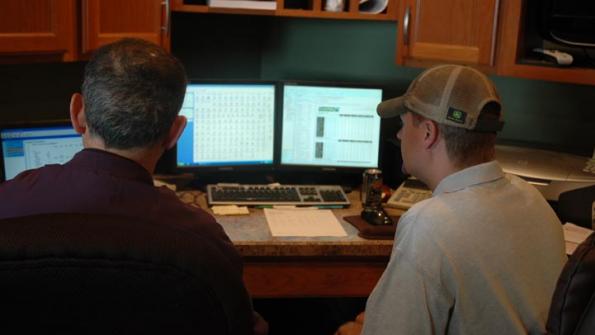February 19, 2013

All of the newspaper and television headlines will scream that net farm income for 2013 will be up 14% compared to last year. And many of those readers and viewers will remember prior headlines that indicated farmers were raking in cash from the USDA’s crop insurance program at levels higher than they would have received in a normal production year. Unfortunately, agriculture needs Paul Harvey to tell, “The rest of the story.”
USDA’s Economics Research Service (ERS) just released its financial projections for 2013, based on trend yields and estimated supply and demand for farm commodities. The forecast is for net farm income (NFI) to be $128.2 billion, which is 14% higher than in 2012. What will either not be included in the news story – or buried – will be the ERS projection for net cash income, (NCI) which is different.

Net Cash Income
NCI is forecast to be down by 9% and that is the amount of cash in your bank account, and does not include the unsold inventory at the end of the year. NCI is forecast to be down, nationally and in your account, due to higher production expenses and less commodities that are actually sold this year, but carried over to 2014 due to low prices. That is not a sexy economic statistic, so no one will want to talk about NCI.

Production Expenses
One of the big issues is the $19.2 billion increase in production expenses, which will be up to $353 billion, and the highest on record. Production expenses have increased 79% in the past decade. That includes a 106% increase in manufactured inputs as well as those produced on the farm, such as livestock feed. Other overhead expenses have increased 60% in the past decade. Among those expense items:
Major livestock expenses are projected to rise by 5%, primarily for feed.
Expenses for purchased livestock will slow down, primarily cause by contraction in the cattle industry.
While a 13.5% increase in project in crop production, expenses are expected to rise $656 million, mostly from seed and pesticide. Those combined with fertilizer, increased $11.3 billion the past two years. The lower cost results from fewer planted acres expected in 2013.
More farmers will be taking crop insurance and even with lower premium costs, the increased volume is pushing up total expenses.
Other expense increases include an 11% increase in labor costs and a 12% increase in cash rent and share rent payments. Total interest payments are expected to rise 22% for operating loans, but decrease 9% for land loans.
The increase in NFI results from a return to trend yields (the current ERS expectation) and from increased production that will reduce commodity prices, which are expected to cause farmers to withhold from the market for a longer period of time than in the 2012 harvest. ERS says, “The value of crop production is expected to rise 11% in 2013, despite a predicted decline in crop receipts. The difference indicates the significant role of crop inventories. Crop receipts are forecast to decline by $3.2 billion in 2013, which would be the first decline since 2009.”
Crop, Livestock Income
Crop Income
The 11% increase in crop value will push it to an all time high. The national value of corn is projected at $81.7 billion. That is based on a 2-billion-bushel increase in inventory that will carry an increased value of $13.2 billion. ERS also says high values for stored hay and soybeans will also push down NCI, “Increases in value of production are also expected for the other major feed crops, especially hay. The value of U.S. soybean production is expected to increase in 2013, but quantity sold during the year is expected to decline, with more production expected to go into 2013 end-of-year inventories. Given a large expected decline in the annual average price of soybeans, and an increase in inventories, cash receipts for 2013 are expected to decline just over 10%.”
Livestock Income
When livestock values are taken into account, NCI for 2013 gets both pushed and pulled. ERS says livestock production is expected to increase by 3.5%, with nearly all species seeing higher average prices. However, there will be declines in inventory for cattle and hogs that will push cash receipts to be slightly higher than their value of production. ERS says beef sales will be down, but higher cattle prices will show an increase in NCI from 2012. Hog prices will be up in 2013 with increased value of production.
Summary
After adjusting for inflation, 2013’s net farm income – forecast at $128.2 billion – is expected to be the highest since 1973. A return to trend yields would lead to record crop production levels and result in substantial year-end crop inventories. This would lead to higher net farm income since this measure goes beyond cash income to include the value of inventory change and other noncash items. Net cash income – which measures the difference between cash expenses and the combination of commodities sold during the calendar year plus other sources of farm income – is forecast at $123.5 billion, down almost 9% from 2012. Even so, 2013’s forecast would be the fourth time net cash income, after adjusting for inflation, has exceeded $100 billion since 1973. The projected $19.2 billion increase in total expenses in 2013 continues a string of large year-to-year movements since 2002, and expenses are forecast to establish a record high. Rent, labor and feed are the expense items expected to increase the most in 2013.
You May Also Like




